* GALVANIZING
Hot-dip galvanized pipe is to make the molten metal react with the iron matrix to produce an alloy layer, thereby combining the matrix and the coating. Hot-dip galvanizing first acid washes the steel pipe to remove the iron oxide on the surface of the steel pipe. After acid washing, it is cleaned in a tank with ammonium chloride or zinc chloride aqueous solution or a mixture of ammonium chloride and zinc chloride aqueous solution, and then sent to the hot-dip galvanizing bath.
Hot-dip galvanizing has the advantages of uniform coating, strong adhesion, good corrosion resistance, and long service life. Especially in harsh environments, such as humid, rainy, acid rain, salt spray and other environments, the performance of hot-dip galvanizing is more prominent. The steel substrate and the molten plating solution undergo complex physical and chemical reactions to form a corrosion-resistant zinc-iron alloy layer with a tight structure. The alloy layer, pure zinc layer, and steel substrate are fused together. Therefore, it has strong corrosion resistance.
1. Uniformity of the coating: The steel pipe specimen shall not turn red (copper-plated color) after being immersed in the copper sulfate solution for 5 consecutive times.
2. Surface quality: The surface of galvanized steel pipe shall have a complete galvanized layer, and there shall be no black spots and bubbles that are not coated. It is allowed to have a slightly rough surface and local zinc nodules present.
| What is the difference between hot dip galvanized and pre galvanized ? | |||||||
| Hot Dip Galvanized Steel Pipe | Pre Galvanized Steel Pipe | ||||||
| Steel Pipe Thickness | 1.0mm and above | 0.8mm to 2.2mm | |||||
| Zinc Coating | average 200g/m2 to 500g/m2 ( 30um to 70um ) | average 30g/m2 to 100g/m2 ( 5 to 15 microns ) | |||||
| Advantage | even coating, strong adhesion, good sealing, and long lifespan | smooth surface, bright color, and thin coating | |||||
| Usage | widely used in Low-pressure fluid transportation for water, sewage, gas, air, heating steam, municipal construction, petrochemical, shipbuilding and other fields. | structural engineering, furniture manufacturing and other fields. | |||||

* PAINTING
Painted steel pipe is to spray different colored coatings on the surface of the steel pipe in order to improve the corrosion resistance and aesthetics of the pipe. Painted steel pipes include spray-coated steel pipes and painted steel pipes.
Spray-coated steel pipe is first acid-washed, galvanized and phosphated, and then electrostatically sprayed. The advantages of this method are strong adhesion of the coating, not easy to peel off, good protective performance, bright and beautiful colors; the disadvantage is that the cost is relatively high, and special spray equipment and highly skilled personnel are required to operate.
Painted steel pipe is directly spray-painted different colored coatings on the surface of the steel pipe without acid washing, galvanized nor phosphating, in order to improve the corrosion resistance and aesthetics of the pipe. The advantages of this method are relatively low cost and simple and convenient processing; the disadvantages are weak adhesion, difficult to achieve long-term corrosion resistance effect, and relatively monotonous color.
When using painted steel pipes, it is necessary to select the appropriate paint type, color and thickness according to the specific conditions of use and requirements. At the same time, it should be ensured that the surface of the steel pipe is dry, clean and smooth to ensure the coating adhesion effect and service life.
Spray-coated steel pipe




Painted steel pipe




* 3PE FBE
3PE (3-Layer Polyethylene) and FBE (Fusion Bonded Epoxy) are two forms of coatings applied to pipes and pipelines in the oil and gas industry to slow or prevent corrosion.
3PE is a three-layer coating that consists of an epoxy primer, a copolymer adhesive, and a polyethylene topcoat. The epoxy primer provides a good bonding surface for the copolymer adhesive, which in turn provides a bonding surface for the polyethylene topcoat. The three layers work together to protect the pipe from corrosion, abrasion, and impact damage.
FBE, on the other hand, is a two-layer coating system that consists of a particulate-filled epoxy resin base and a topcoat that is a polyamide. The particulate-filled epoxy provides excellent adhesion to metal surfaces, while the topcoat provides excellent chemical resistance and abrasion resistance. FBE coatings are used in a variety of applications, ranging from oil and gas pipelines to water and wastewater systems.
Both 3PE and FBE coatings are effective at protecting pipelines and pipes from corrosion, depending on the specific application requirements. The choice between the two is typically driven by factors such as the type of pipeline, the operating conditions, and the cost.
| 3PE V.S. FBE | |||||||
| Adhesion Strength | 3PE coating provides higher adhesion strength than FBE, as the copolymer adhesive in 3PE helps in better bonding between the epoxy primer and polyethylene topcoat layers. | ||||||
| Impact and Abrasion | The polyethylene topcoat in the 3PE coating provides better resistance against impact and abrasion compared to FBE. | ||||||
| Usage | FBE coatings are preferred in pipelines where the operating temperature is high as they can withstand high temperatures better than 3PE coatings. On the other hand, 3PE coatings are preferred in applications where the pipeline is exposed to soil and water, as it provides better protection against corrosion and rust. | ||||||
*Oiling
Applying oil to the outer surface of the steel pipe is a method of providing corrosion protection and protection to the steel pipe. Oiling can slow down the contact between the steel pipe and the external environment, and prevent the steel pipe from being affected by oxidation, corrosion, wear, etc.

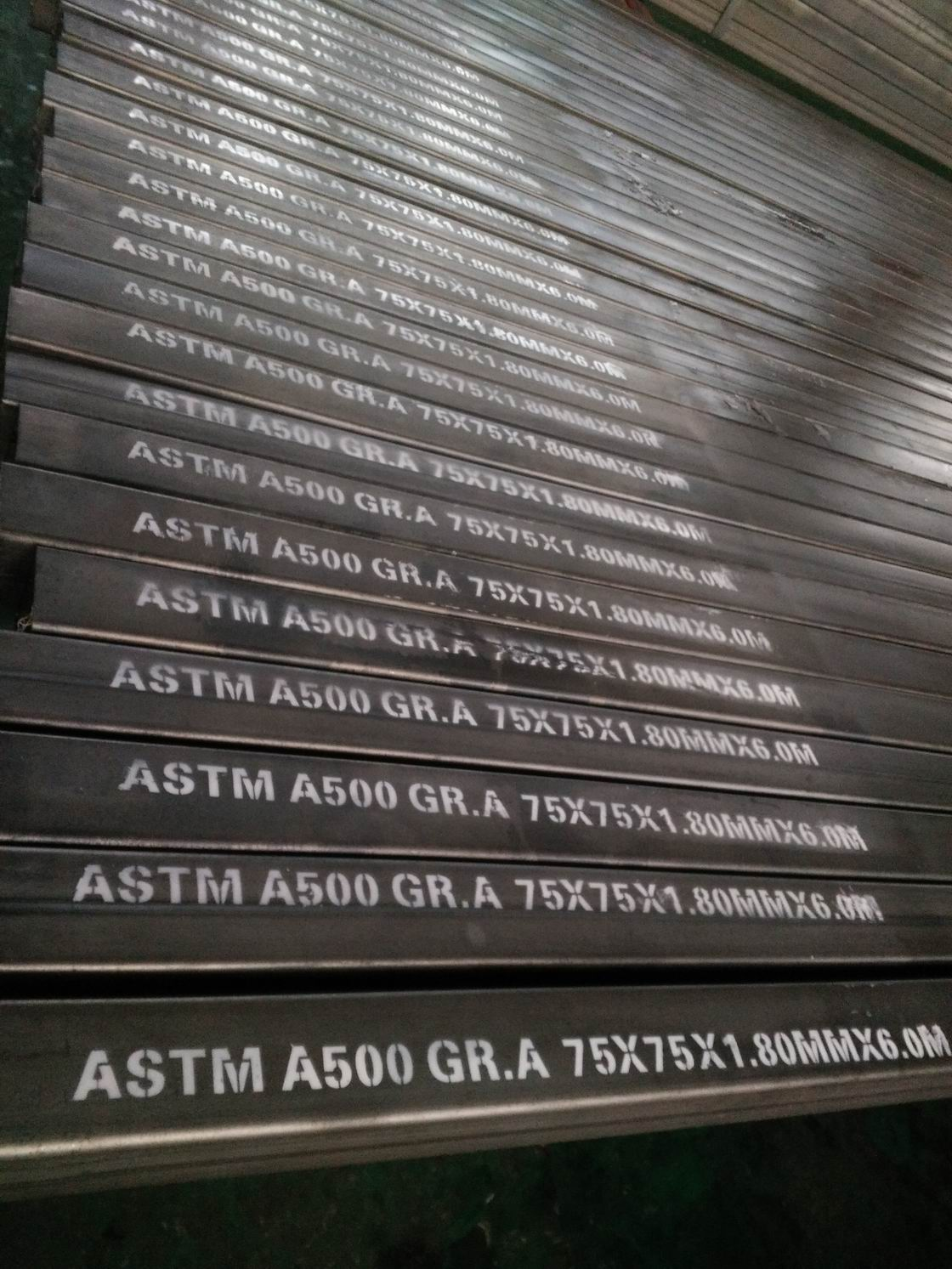
*Stencil or Stamp
Stamp
Stencil




*Punching
Operate mechanical punching machine to apply pressure to the punch using the punching die. Maintain a steady pressure until the punch penetrates the steel pipe wall, forming a clean and precise hole.
The steel pipe drilling process has a wide range of applications, including but not limited to the following:
1. Connection of steel pipes: Drilling is one of the commonly used methods for connecting steel pipes. Through the steel pipe drilling process, holes can be opened on the steel pipe, so that bolts and nuts can be installed on joints and flanges, so as to achieve the purpose of connection.
2. Fixing of steel pipes: It is also a common application to fix steel pipes to walls or other surfaces through the steel pipe drilling process.
Usage in steel structure solar panel bracke
Usage in highway material




*Threading

NPT (National Pipe Thread) and BSPT (British Standard Pipe Thread) are two commonly pipe thread standards.
NPT threads are commonly used in North America and BSPT threads are more commonly used in Europe and Asia.
Both standards have tapered threads that create a tight seal when tightened together. Widely used in water, gas, oil and other pipelines connection.
2. Fixing of steel pipes: It is also a common application to fix steel pipes to walls or other surfaces through the steel pipe drilling process.
*Grooved
Roll Groove connection is a popular method of connecting fire protection pipes because it offers many advantages. Here are some of the main benefits:
1. Convenient and fast installation: Roll Groove connection allows for quick and easy installation of pipes and fittings, as there is no need for welding or threading.
2. Economical and environmental protection: This connection method is more cost-effective than other methods, making it a popular choice for many applications. It is also environmentally friendly as it reduces waste and uses fewer resources.
3. Preserves the original characteristics of the pipes: Roll Groove connection does not affect the original properties of the pipes, such as their strength, durability, and resistance to corrosion.
4. Maintenance is convenient: If maintenance and repair are needed, Roll Groove connection makes it easy to disassemble and replace components, without requiring any specialized tools or equipment.

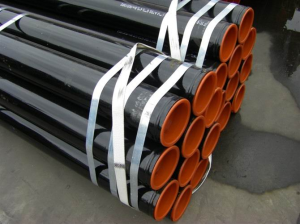
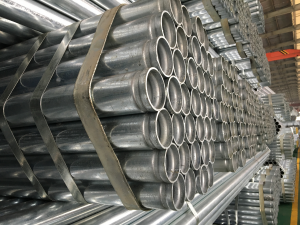
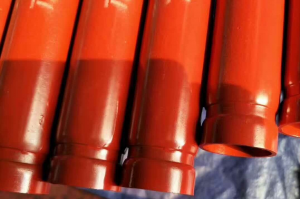
| DN | Outside Diameter | Sealing Surface Width ±0.76 | Groove Width ±0.76 | Groove Bottom Diameter | |
| mm | Tolerance | ||||
| 50 | 60.3 | 15.88 | 8.74 | 57.15 | -0.38 |
| 65 | 73 | 15.88 | 8.74 | 69.09 | -0.46 |
| 65 | 76.1 | 15.88 | 8.74 | 72.26 | -0.46 |
| 80 | 88.9 | 15.88 | 8.74 | 84.94 | -0.46 |
| 100 | 114.3 | 15.88 | 8.74 | 110.08 | -0.51 |
| 125 | 141.3 | 15.88 | 8.74 | 137.63 | -0.56 |
| 150 | 165.1 | 15.88 | 8.74 | 160.78 | -0.56 |
| 150 | 168.3 | 15.88 | 8.74 | 163.96 | -0.56 |
| 200 | 219.1 | 19.05 | 11.91 | 214.4 | -0.64 |
*Beveled
Diameter larger than NPS 11⁄2 [DN 40] plain-end beveled with ends beveled to an angle of 30°, +5°, -0°



*Plain Ends
Cutting both ends of steel pipe into planes at 90◦ to the axis is a common requirement in many industries where the pipes are used. This is usually done to prepare the pipe for welding or other types of connections, and ensure that the ends are flat and perpendicular to the pipe's axis.

*Flanged
A flanged steel pipe is a type of pipe that has a flange attached to one or both ends. Flanges are circular discs with holes and bolts that are used to connect pipes, valves, or other equipment. The flanged steel pipe is usually made by welding a flange to the end of a steel pipe.
Flanged steel pipes are commonly used in industries such as water supply, oil and gas, and chemical processing. They are preferred over other types of pipes because they can be easily installed and are highly durable. Flanged pipes can withstand high pressure and can be easily disassembled for maintenance or repair.
The flanges on a flanged steel pipe come in different shapes and sizes to match the connection requirements. Common types include slip-on flanges, weld neck flanges, threaded flanges, and socket weld flanges.
In summary, flanged steel pipes are a popular choice for many industries because they provide a reliable and durable connection between pipes and equipment.
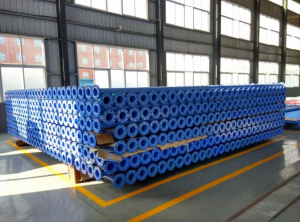
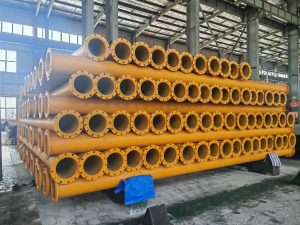
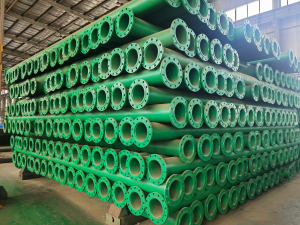
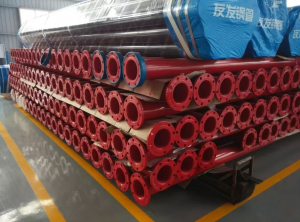
*Cutting Length
Water cutting technology is known for its precision and accuracy, as well as its ability to produce smooth, burr-free edges.
One of the major advantages of water cutting technology is that it is a cold cutting method, meaning that there is no heat-affected zone (HAZ) around the cut.
Water jet cutting is also environmentally friendly, as it does not produce any hazardous waste or emissions. The system uses only water and abrasive, and the waste products can be easily collected and disposed of safely.

*Packaging and Delivery
PVC Plastic Packaging

To protect steel pipes during transportation and storage, they are often packaged with PVC plastic packaging to provides a protective layer that prevents scratches, dents, and other types of damage.
In addition to protecting the steel pipes, PVC plastic packaging also helps to keep them clean and dry. This is especially important for pipes that will be used in applications where cleanliness is crucial, such as in water supply systems or food processing plants.
*All pvc packaged;
*Only pipe ends pvc packaged;
*Only pipe body pvc packaged.
Wooden Packing
To protect steel fittings during transportation and handling, customers can opt for custom wooden boxes, and can also be customized with the customer's labels for easy identification.
The advantage of using custom wooden boxes with end supports is that they provide extra protection and minimize the risk of damage to the steel products. They also facilitate the ease of handling and transportation, as the boxes can be stacked and secured on pallets for transport by land, sea, or air.

Shipping

Most steel products are typically transported via sea, land, or air transportation, with the majority of shipments departing from Tianjin ports.
For sea transportation, there are two main methods: container shipping or bulk shipping.
Land transportation is typically either by rail or truck, depending on the destination and the transportation company used.
*Support
Pre-sales services:
1. Free sample: Length 20cm free steel pipe sample with delivery costs paid by the customer.
2. Product recommendations: using our professional knowledge of products to recommend them to customers.
Mid-sales services:
1. Order tracking: we will notify customers of the production and shipping status of their orders through email or phone, ensuring that they have a clear understanding of the progress of their orders.
2. Providing inspection and shipping photos: we will provide product photos before shipping for customers to confirm if they meet requirements. At the same time, we will also conduct strict inspections and quality control before shipping to ensure that they meet our high-quality standards.
After-sales services:
1. Follow-up on customer feedback after receiving the goods: we value customer feedback and will follow up to understand their use and feedback of our products, in order to continuously improve their quality and services.
2. Price trends and industry information: we understand that customers may face market changes and industry trends, so we will regularly provide information on market and industry dynamics to help customers understand market and industry changes in a timely manner, enabling them to make more informed and favorable decisions.